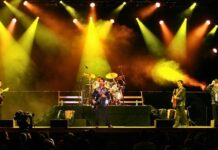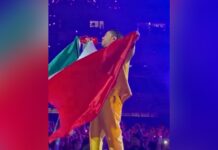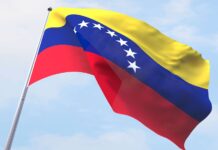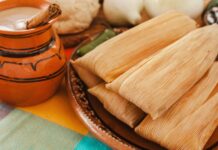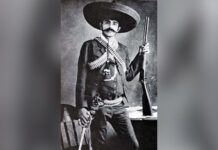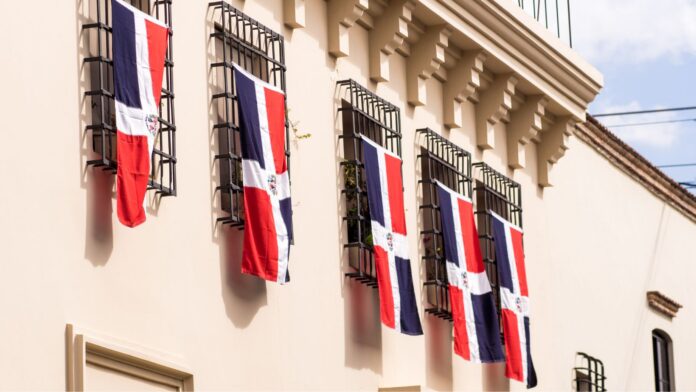Once called Quisqueya, the home of the peaceful tribe called the Taínoso, the Dominican Republic changed dramatically when a ship called the Santa María sailed ashore, en route to find quick passage from Europe to India. Columbus and his crew first stumbled across the islands that make up the Bahamas, then Cuba, then arrived at what he baptized La Isla Española or Hispañola a couple of years later. He was immediately captivated by the natural beauty that surrounded him, and though the mission to find a spice trail failed completely, the new plan was to find gold and other treasure to bring home.
Columbus left behind some of his crew members during his brief return to Spain to negotiate next steps with the Crown, and when he got back to Hispañola all of them had disappeared. His second attempt was much more grandiose and far more effective for his colonial purposes. With the force of 17 ships and their crews, Columbus and his men fully overtook the island by 1494, claiming this “most beautiful island” they had ever seen in the name of Ferdinand and Isabella of Spain. The Taínos were rapidly wiped away.
Spain would go on to control the island for nearly a century, setting up a home base from which to launch other expeditions — to Puerto Rico, Mexico, and the Pacific Ocean, for example — as well as eventually serving as a fountain of resources and a pit stop along the slave trade routes. Columbus’s brother Bartholomew declared what was first known as “La Isabela” in honor of the patron queen, the capital of the island. The city, now named Santo Domingo, is still today the center of government for the Dominican Republic, the first European city in the Americas and the oldest colonial city in the entire continent.
Hispañola would go on to be ruled over by Francis Drake and other pirates for about 50 years; then, the French would take over an entire portion of the island, leaving the Spanish-speaking portion of the population to occupy only half. The two colonies simmered side-by-side until Toussaint Louverture started the Haitian revolution in 1822, taking over the entirety of the island. Battles were fought for 22 years, until finally the portion first called Santo Domingo severed itself from Haiti and went onto become the Dominican Republic. By 1861, two separate countries, Spanish-speaking Dominican Republic and French-speaking Haiti both occupied the island of Hispañola.
After independence came a struggle to stabilize and a temporary dependence on the United States, who built up some of the infrastructure and government bodies but only to suit its own capitalistic needs. The first relatively free elections were held in 1924; Trujillo ascended to power and refused to leave for the next 30-odd years. This “people’s election” quickly turned into a dictatorship, followed by a brief return to colonialism, then several military coups and power struggles. The Dominican Republic’s stability was compromised for a large portion of the 20th century.
Through these years, the abundance of arable land in the Dominican Republic resulted in a vibrantly agricultural economy, with tobacco, sugar, and coffee leading the pack on the country’s ubiquitous exports. Together with other crops and foodstuffs, the land that yields its fruit has long been the greatest asset of the Dominican Republic. When my flight touched down in Punta Cana’s airport, however, my eyes were catching on the other kinds of land I had spied from the sky: the undeveloped forests and mountains, the unspoiled landscapes that still comprise around 40% of the island.
Over the course of five centuries the people who inhabited the island started as monocultural Taínos, exterminated by the colonists, and became dominicanos. A blended people emerged from the mestizaje between the remaining natives to the island, their Spanish (and French) colonists, African slaves, and various other waves of immigration. The customs and cultures of all of these places and peoples and time converged to produce the local music, cadence, food, and vibe, while the landscape is still wild and stunning in vast ribbons through the island.
This incidental preservation of nature, together with the Caribbean warmth of the people and propitious climate, have collaborated to make tourism — the reason I found myself traveling to the major international airport in Dominican Republic — the number one industry in these post-agricultural times. While the cultivation of tobacco, sugar for rum, and coffee might contribute to having ample reasons to go there, many people who visit the Dominican Republic are seeking ecological adventures in a personable setting, much like the Costa Rican eco-adventure model becoming popular worldwide.
Of course, tourism cannot flourish in a completely unspoiled land, at least not in the way in which we’ve grown accustomed to traveling. Sure, we want to zipline through the thick canopy of greenery that grows around the water and across the mountains (which we were able to do at the sensational Scape Park, and take pictures at the dedicated photography stand with a monkey on our shoulder and a parrot in our hand. But we also want to come back to a place with air conditioning, sheets with high thread count, and hopefully an all-inclusive beverage package. Can both of these be sustainable in the same place at the same time?
Soon after climbing into the van that would drive us to the house we’d rented for our family reunion, I realized that snaking in between all of that green were uncannily large areas of development, like strip malls, gated communities, and resort hotels, clearly destined to house and entertain visitors to the island. I guessed before looking at number two on the list of important industries in the DR and there it was: construction. Between building the places and inviting tourists to come, development and hospitality have displaced agriculture as the top-grossing industries in the Dominican Republic today, after an upswing in economic growth over the last two decades.
We passed in front of many manicured garden gates and eventually turned into one that swung open and let us pass through. Our multi-aged group was staying at this house, a vacation rental property that among its most impressive qualities boasted a lush backyard and the various wildlife that lived there, including small birds, lizards, and ducks. The six kids in our group spent many happy hours out there enjoying the soft warmth of the sun and the distant buzz of sprinklers watering other lawns.
Once settled, we prepared to consume the touristic treats the DR offered, beginning with hiring a professional photographer to do a private shoot of the family together. We would soon discover that a dedicated photographer is a ubiquitous part of visitor experiences in the DR. Music is also always present, often merengue and at least 2 or 3 tracks per hour turn to the Dominican great Juan Luis Guerra and his band 440. Luckily photography, in this digital age, is quite optional and was reasonably priced in Punta Cana. Music was not only free of charge but just the thing to enliven a trip, set an upbeat tone, and seal memories with soundtrack. Both of these options added to the experience and we soon saw why tourism is flourishing in the area.
Digging a little deeper, I found out that Columbus was right and there was a lot of gold in the Dominican Republic, as well as silver, nickel, and other metals, both precious and not. Luckily, he was unable to find it or steal it, so that currently both domestic and foreign investors are tapping into those reserves, making mining the next most lucrative industry, after service, construction, and agriculture. These areas of commerce and trade account for the generally improving conditions in the country’s foreign debt and their resilience after recession.
The free trade zones on the island are yet another incentive bringing in people to populate the gleamingly new resorts and thoughtfully planned communities, little boxes upon others, all in a row. I began to wonder as we drove to the beach in Bávaro to hop onto the boat that would take us out deeper into the Caribbean Sea, where was the real Dominican Republic? Yes, we’d had platefuls of salty, crispy, pleasingly greasy mofongo and listened to bachata and merengue out of every speaker in every car, boat, and place we’d visited, but I knew that extreme income inequality still exists in the DR and centuries-old problems haven’t simply disappeared under that last coat of white paint on the resort walls.
There was finally a moment during our drive out to the marina (where we would jump on a small boat that would take us parasailing, tied to the boat like when water skiing, wearing a parachute harness in the air) that I caught a glimpse. The road between the developed area and the marina reminded me of the road between the industrial Barranquilla and the colonial beauty of Cartagena. That in-between is like a land that time skipped over: people living simply, in homes and working at stores they’ve built themselves. Minimal technology, no glass in the window frames, people sitting on stoops and outside chatting with each other, no one in a hurry. It wasn’t the sight of misery, but it’s definitely the sign of poverty, showing that the persistent problem since the colonization still lurks and less income inequality is yet aspirational.
The public marketplace can always be counted to show a bigger array of locals, both vendors and shoppers, and the colorful, ramshackle stands in the harbor market before we boarded our boat was no exception. As we got on the boat, I heard two of the vendors speaking in an accent unmistakably Venezuelan. The previous night, we had eaten dinner at an upscale gastropub-type place also owned and operated by a Venezuelan. I would come to learn that the crisis in Venezuela from Chávez through Maduro, which has resulted in the mass exodus, has landed many emigres in nearby, Spanish-speaking República Dominicana. Opportunity seems to be another prized commodity on offer in the DR.
Of course, Venezuelans are not the only ones who have come in to join the masses enjoying free trade zones and the marketplace. As I stepped onto the boat I noticed some of the shops had Russian names, spelled out in Cyrillic characters. Though I am able to read them, they were totally incongruous to my brain at that moment, as it was set in Latin American mode. I didn’t have time to ask about these shops when our guide showed up to meet us and lead us aboard, holding each of our forearms as we stepped in. Once aboard, we travelled out some to where there were no other craft anywhere near us and the shoreline had shrunk to a tiny margin between sea and sky. The crew dropped anchor there.
The photographer on board, upon hearing my oldest son’s name asked him (in Russian) whether he spoke Russian. My kid led him to me on the deck looking out at the water and he asked me the same question. “Da,” I responded, adding “ne mnoshko” to hedge my bets in case he was more proficient and was about to launch into rapid-fire mode. He laughed and asked me, now in Spanish, “¿Tú por qué hablas ruso?” explaining that he’s been trying to pick up some words here and there since so many Russian business owners have hung their shingles in Punta Cana and surrounding areas. “How do local people feel about that?” I asked him, and he smiled and shrugged: “Hay suficiente para todos.”
The boat tour stopped in the deep, long enough that we could descend into the clear water with our masks and snorkels and spend an hour floating at the surface in starfish formation, faces in the water, breath loud and regular through the tube, gazing down at the watercolor immensity. Then, the boat picked up anchor and brought us closer to shore to a sandbar area where most of us could easily stand on the ocean floor. The photographer put down his camera and jumped in along with us. One of his crewmates reached down to hand him what looked like a large, white, oblong life preserver float. It turned out to be a large, white, oblong floating bar, armed with a dozen bottles and a neat stack of cups.
I could barely contain my glee at the ingenuity of this criollo tourism technology. He asked for my order, reminding me it’s included in the price of the ticket. I shrugged, unable to decide. He suggested the local moonshine he called “Dominican Power,” prompting me to ask him what’s in that. He explained that it contains both wine and spirits and also native roots. In that moment, I was struck by how his description resembled a metaphor for the country itself, and immediately consented, standing in the pool-like sea to await my reddish-hued cocktail. In the sun, my cup looked like it held a completely innocuous liquid, perhaps a Shirley Temple. The Dominican Power was sweet and little bit bitter, the ice and seltzer water a good foil. It went down so easy that sunny afternoon, so naturally, I drank two.
For Image credit or remove please email for immediate removal - info@belatina.com






